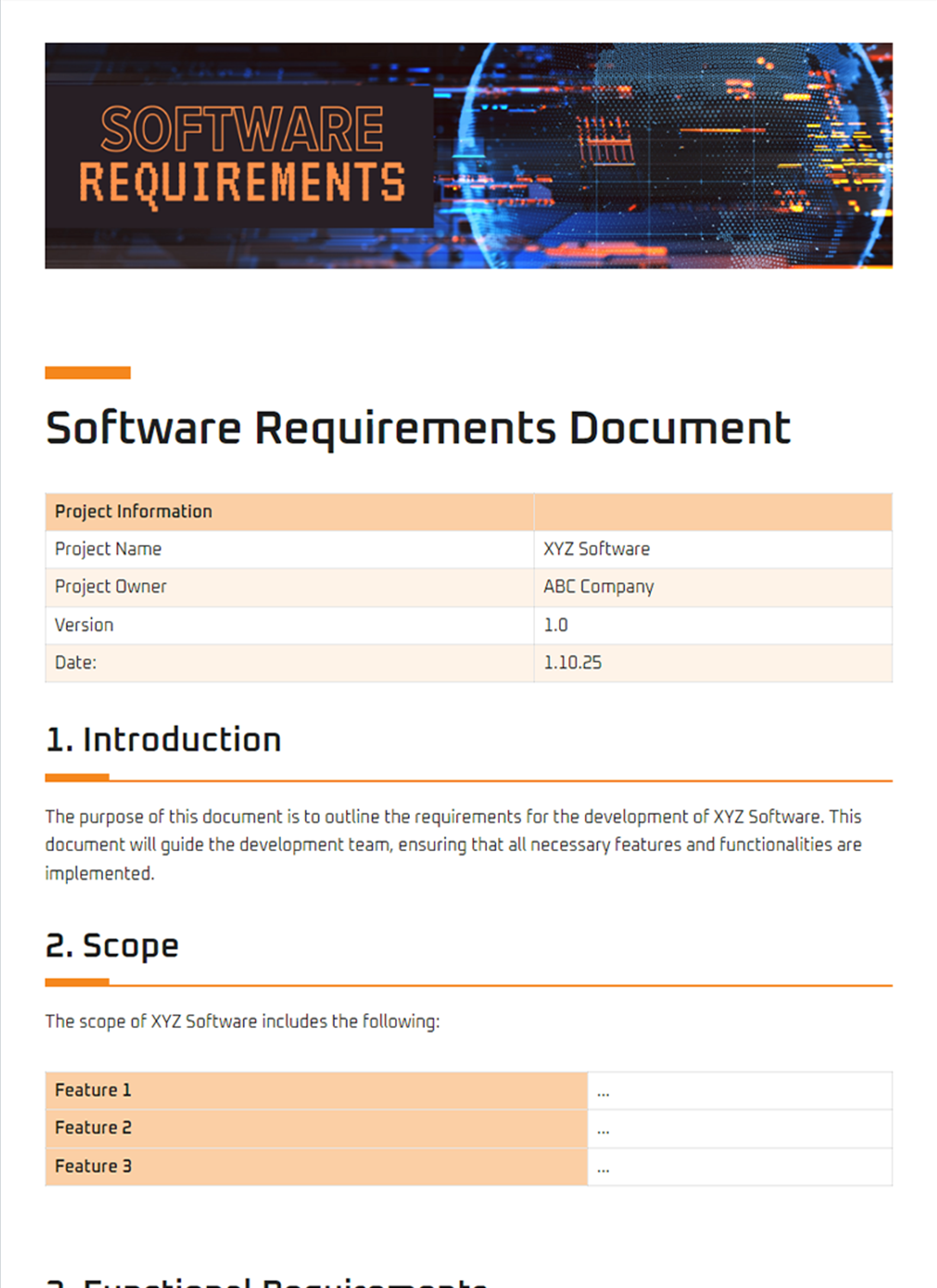Documenting requirements plays a critical role in software development, as it facilitates clear communication between stakeholders and ensures that the end product aligns with their expectations. A well-structured requirements engineering document template helps gather, organize, and present requirements effectively. It provides a standardized format to guide the documentation process, ensuring consistency and completeness.
Requirements engineering document templates are invaluable tools for software development teams, project managers, and business analysts. They streamline the requirements gathering process, minimizing the risk of misunderstandings and ensuring that all necessary information is captured. By using a template, teams can document requirements systematically, track changes, and collaborate efficiently. Additionally, templates promote stakeholder engagement by providing a common platform for gathering and sharing feedback.

Importance of a Requirements Engineering Document Template
A comprehensive requirements engineering document template serves as the foundation for successful software development projects. Its use offers numerous benefits, including:
**Clear and Concise Documentation:** Templates provide a structured approach to document requirements, ensuring clarity and ensuring that all essential information is captured in a consistent manner.
**Improved Communication:** Standardized templates facilitate effective communication among stakeholders, reducing the likelihood of misunderstandings and ensuring everyone is on the same page.
**Enhanced Traceability:** Templates support traceability by linking requirements to other project artifacts, enabling teams to track changes and ensure that requirements are implemented as intended.
**Reduced Risk:** By providing a comprehensive and well-organized documentation, templates mitigate risks by reducing the likelihood of errors and omissions.
Key Components of a Requirements Engineering Document Template
An effective requirements engineering document template typically includes the following key components:
**Introduction:** This section provides an overview of the project, including its goals, scope, and intended audience for the requirements document.
**Stakeholder Analysis:** This section identifies and describes the stakeholders involved in the project, their roles, and their needs and expectations.
**Requirements Gathering:** This section outlines the methods used to gather requirements, such as interviews, workshops, and document analysis.
**Requirements Definition:** This section provides a detailed description of the requirements, including their functional and non-functional aspects, as well as any constraints or dependencies.
**Requirements Prioritization:** This section explains how requirements are prioritized, considering factors such as importance, urgency, and risk.
**Requirements Validation:** This section describes the processes used to validate requirements, such as reviews, inspections, and testing.
**Requirements Management:** This section outlines the processes for managing requirements throughout the development lifecycle, including change control, versioning, and traceability.
Conclusion
Requirements engineering document templates are indispensable tools for software development projects. They provide a structured and standardized approach to document requirements, ensuring clarity, consistency, and completeness. By using a template, teams can streamline the requirements gathering process, improve communication among stakeholders, enhance traceability, and reduce the risk of errors and omissions. A well-crafted requirements engineering document template is essential for successful software development projects, helping teams deliver products that meet the needs of stakeholders and achieve project objectives.
Remember, the effectiveness of a requirements engineering document template depends on its adaptability to specific project needs. Teams should carefully consider their project requirements and tailor the template accordingly. Constant refinement and improvement of the template based on project experiences will help ensure its continued effectiveness and relevance.
